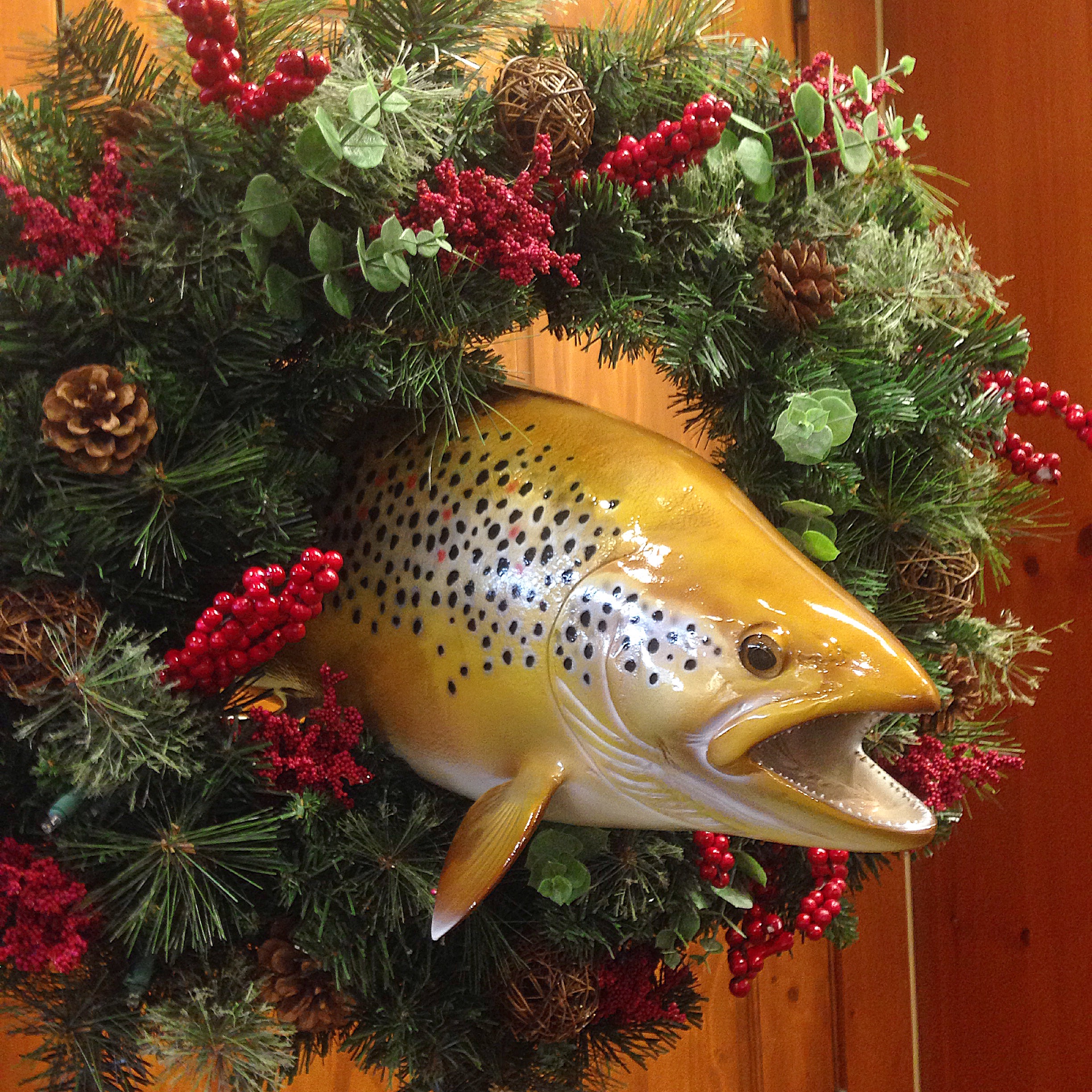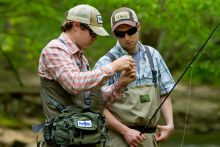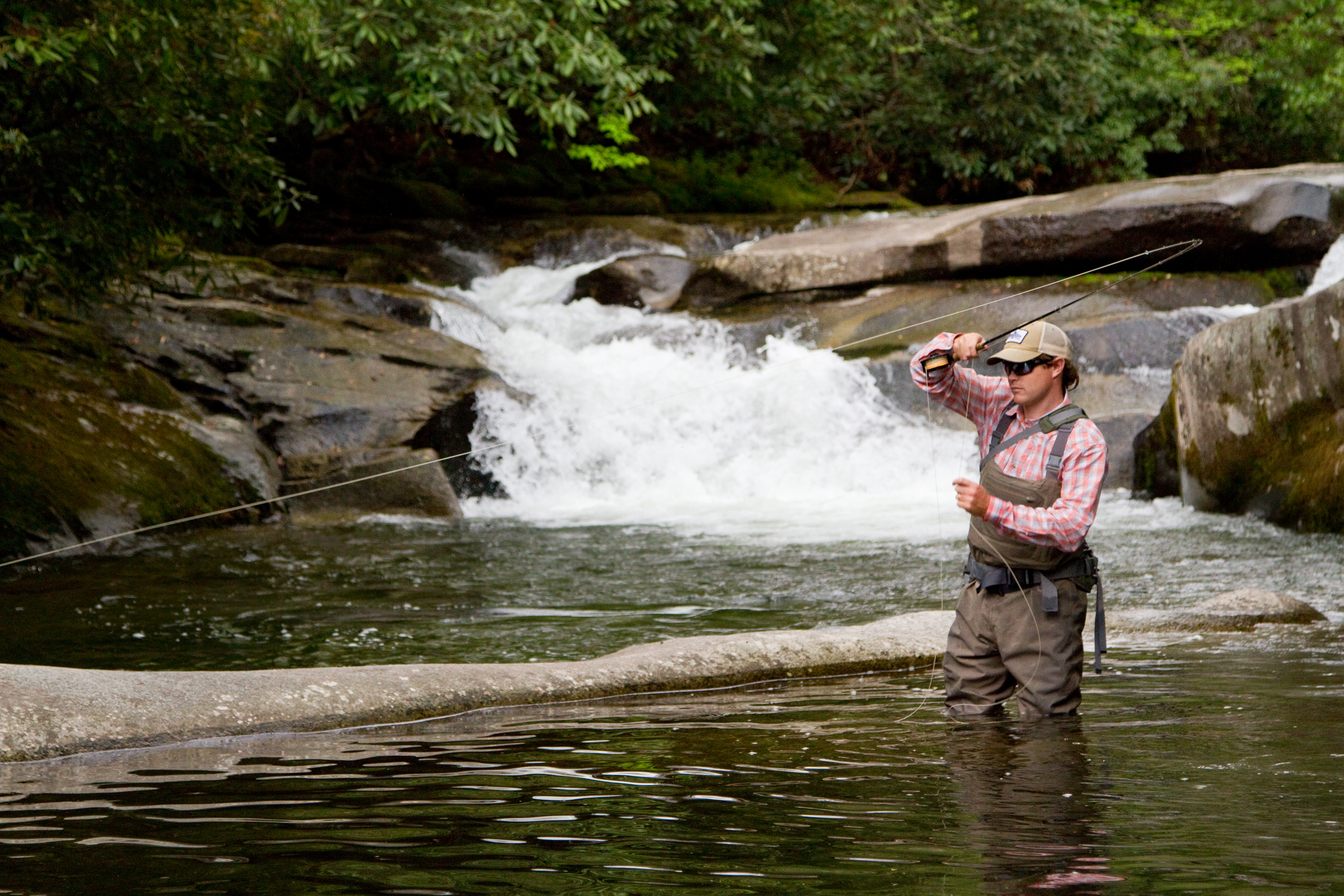By Brown Hobson, owner Brown Trout Fly Fishing LLC
Over the Christmas Holiday my wife and I visited family of mine living in Abu Dhabi, United Arab Emirates. For those of you who don’t know where in the world that is it is a small country on the south eastern tip of the Arabian Peninsula with a coast line on the Arabian Gulf. The UAE is best know for its famous city Dubai, and for the crazy amount of oil they produce.

(The UAE is bordered to the West by Saudi Arabia and to the East by Oman)
My family has been over there for three years so the region has been on my radar, and last winter I read about Jeff Currier’s experience fishing out of Dubai on his way to the Sudan. Jeff fished with Nick Bowles of Ocean Active, and reading about his experience peaked my interest. Once my wife and I planned our trip I contacted Nick to see about setting up a day of fly fishing. We got the date worked out and he prepared me to fish for Talang Queenfish and Yellow Trevally.
We landed in Abu Dhabi Christmas Eve at 3:00 am local time and enjoyed family and touring Abu Dhabi until December 27 when we headed to Dubai. My Guide Cameron Mundy texted back and forth with me the night before to get everything set up. We switched our trip from a full day to a half day because the queen fish were disappearing after 12:00 and that was our primary target. We met the next morning, 7:00 am, at the Jebel Ali Golf Course Marina and drank coffee while got acquainted with each other waited for the boat to be readied. The marina was about 15 km south of Dubai and immediately north of the new Palm the Emirates are building.

(The Jebel Ali Golf Course Marina is between the palm and the Port)
Cameron is a native of South Africa, but spends 11 months a year in the UAE and Oman. Ocean active mostly operates out of a couple of locations in Oman and the fishing looks spectacular. They catch a wide variety of fish there including different pelagics and some large Giant Trevallys. I would love to go back sometime and fish with them in Oman, but I didn’t have time on this trip.
Our boat was ready at 8:00 sharp. Ocean Active isn’t currently running their own boats in Dubai so we had a captain from the marina and that freed Cameron up to guide me from the bow. We left the marina and turned slightly east after we passed the palm.

(Leaving The Jebel Ali Marina)
The gulf around Dubai doesn’t have a ton of underwater structure so Cameron had us head for the shipping channel because it had a 5 m drop. We cruised the edge of the channel looking for birds and didn’t see any for about an hour. Our plan once we found birds and fish was for Cameron to cast a hook less top water plug and tease the school close enough for me to make a cast with my fly, bait and switch. I had an 8 wt with an intermediate line and a size 6 pearl gotcha. We cruised up the channel headed for a couple areas a few miles out that Cameron had been finding fish in.

(One of the many container ships we dodged during the trip)
About 9:30 we arrived at a spot in the channel where we saw dozens of fish trap buoys, a good sign. We slowly cruised around watching the birds. They were flying around in a manner that made us think they had seen bate moments earlier. Cameron was blind casting his plug and I was warming up. Suddenly we noticed a school of good sized queenies charging toward the boat. One fish did look at Cameron’s plug, but they were gone very quickly. I probably had a shot at the fish, but it was my first shot and happened in fewer than 5 seconds. We spent another 10 minutes waiting for the school to surface again to no avail. We continued up the channel and finally found another school of fish. These queenies were pretty small. We weren’t being picky at this point so I shot my cast in there and started a roly poly retrieve. Nothing was following the plug, but because we were only 60’ from the school I kept shooting casts in there. On the fourth cast I hooked up. The fish instantly dove straight down.

(The runs were short but pretty powerful, and after about 5 minutes I landed my first queenfish)
It was small and a little misshapen, but I was psyched. By the time we finished the photos and resumed our hunt the fish were gone. That would be the theme of the day. The fish would not stay on the surface for very long at all.

About thirty minutes later we found another promising school of fish with lots of birds working. No fish would follow the plug, but I was able to get my fly into the school and about halfway back to the boat a mediums sized queenie hit my gotcha. I saw the fish nail the fly and even if I hadn’t I could tell he was a larger fish. Instantly all my line was ripped of the bow of the boat and into the water. This fight lasted closer to ten minutes and this fish’s power was pretty impressive. Again no crazy long runs, but there was no turning or stopping when he did go.

(Queenfish #2)
My third queenfish followed quickly. The school we were on only moved a few hundred yards and by the time we were set up again there were several hundred queenies busting bait simultaneously. We stopped the boat and I made a cast, but because the boat was still moving I couldn’t strip fast enough to set the hook when the next fish ate. Luckily they were so happy that my second cast into this school was a success. It was a really cool sight and the third fish was on my fly within a second of it hitting the water.

After landing my third fish the school disappeared and we spent another hour looking for more queenies to no avail. We had about 45 minutes left so we decided to head back toward the marina and fish some of the rock jetties along the palm looking for yellow trevallies. We set the boat up so we could drift down the rocks blind casting as we went. I did get a bump from something, but no hook up. A second species would have been cool, but I was totally content catching a few fish of a new species in a totally new place. The UAE is a really neat place to visit and if you are there I highly recommend calling Cameron at Ocean Active. He is a cool guy with a neat fishing background who will put you on fish. If you have any questions about the trip I will be happy to go into further detail.




 Many of our fly fishing wade trips take place on
Many of our fly fishing wade trips take place on  Jared Sullivan included Brown Trout Fly Fishing LLC and the Davidson River in his
Jared Sullivan included Brown Trout Fly Fishing LLC and the Davidson River in his 








